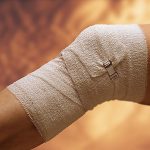
Looking for ways to burn extra calories? Don’t just stand there — these moves allow you to multitask for fitness. Whenever you’re stuck in a long line, do toe raises to work foot and calf muscles. Simply lift both your heels off the ground and roll up to your tiptoes. Hold for five seconds and then roll back down. The American Council on Exercise suggests alternating between slow and fast rolls to reach all muscle fibers. Isometrics are another option, and no one will be able to tell what you’re doing. Cycle through your various muscle groups by contracting one group at a time. Start with your calves and work up to your thighs and glutes. Then do your abs, pecs, biceps and triceps. To contract, tighten and hold each muscle group for a full 30 seconds before moving on to the next group. These contractions are easy to do if you’re standing on a bus or train or even as you ride the elevator to your office. Make brushing your teeth even more effective by doing squats. To add a fitness component to your TV viewing, trade in your cushy spot on the sofa for a stability ball. You’ll work your core muscles and improve posture just by sitting on it. Keep small hand weights nearby and grab them for sets of upper body… read on >


















